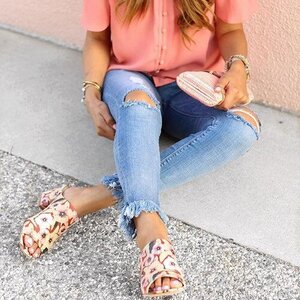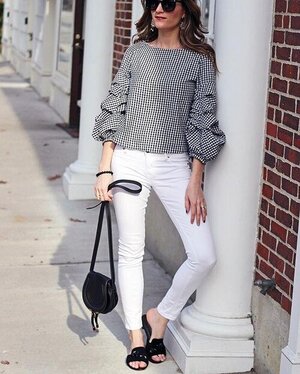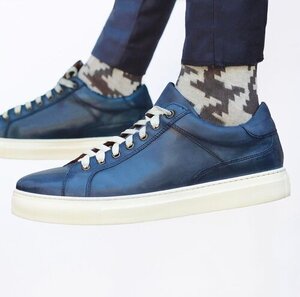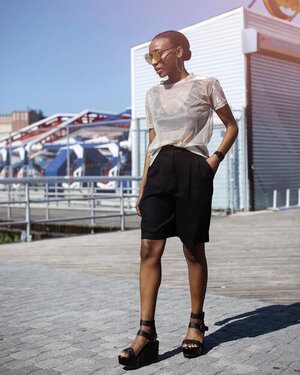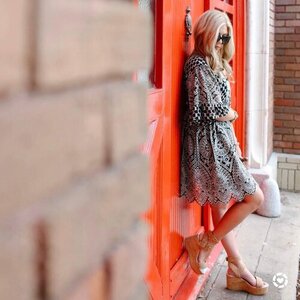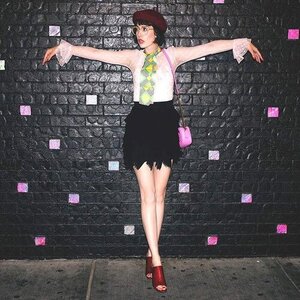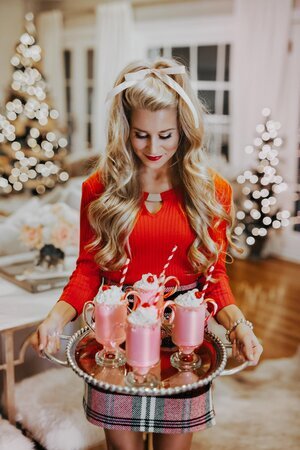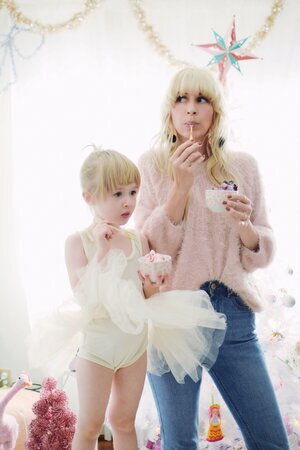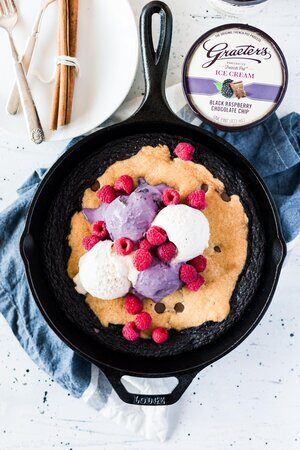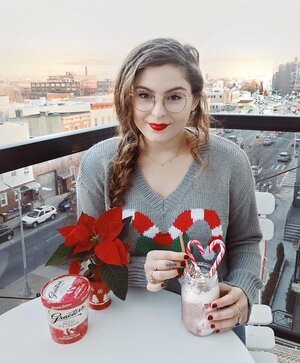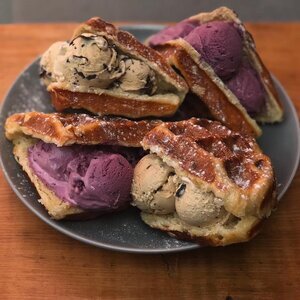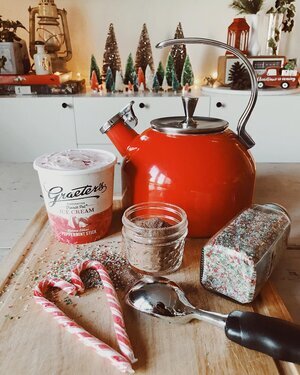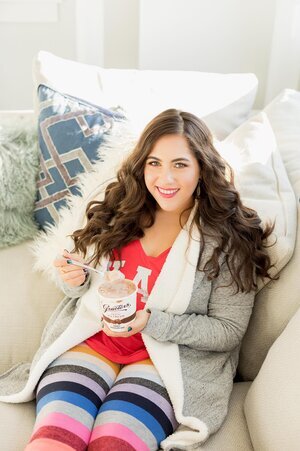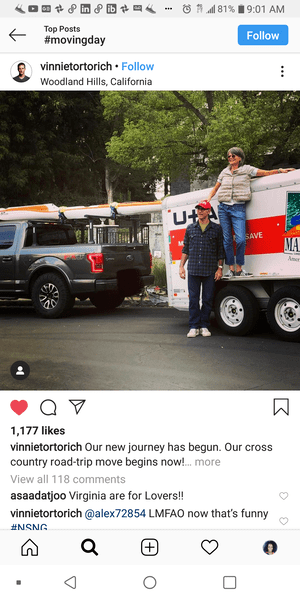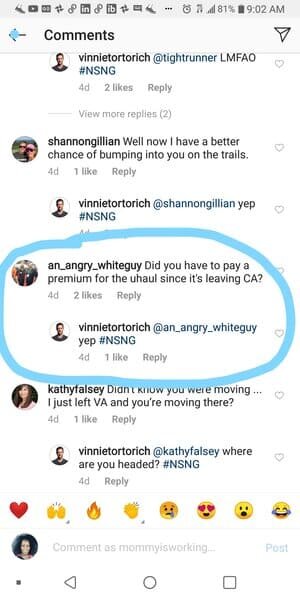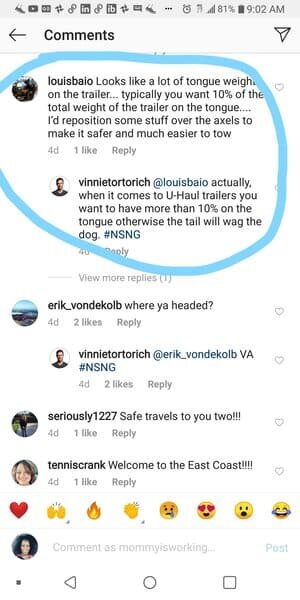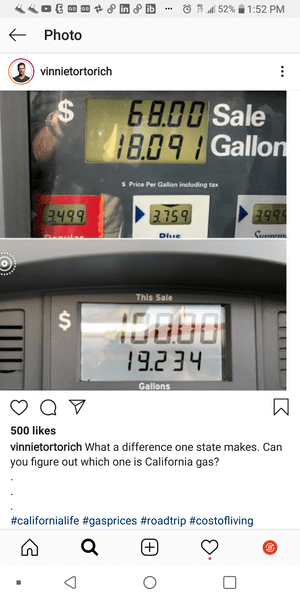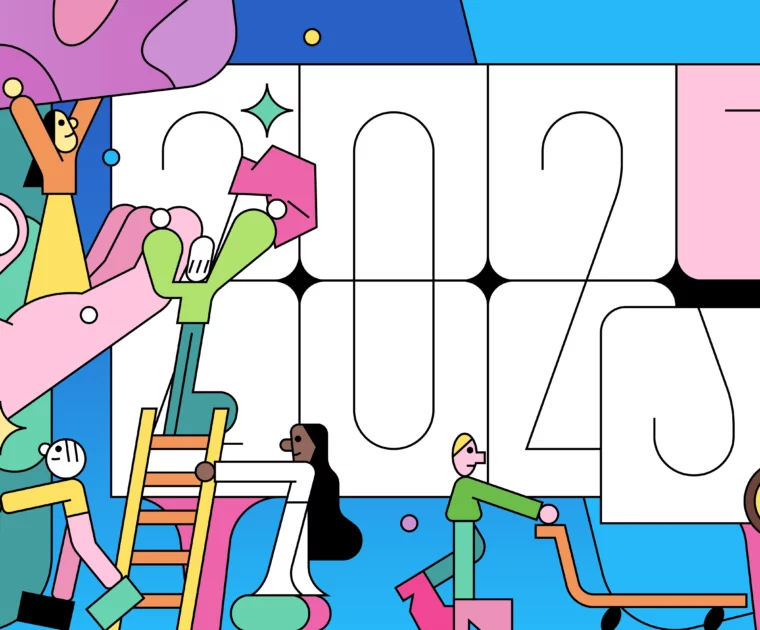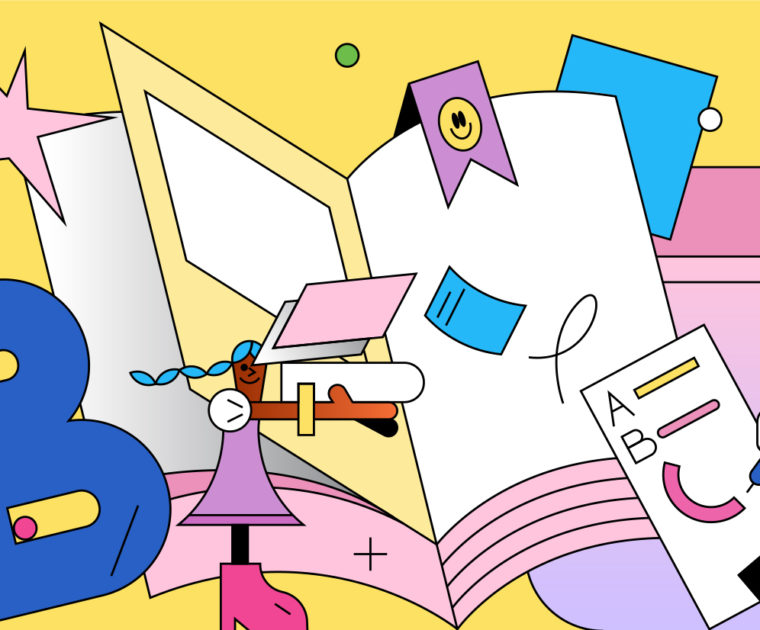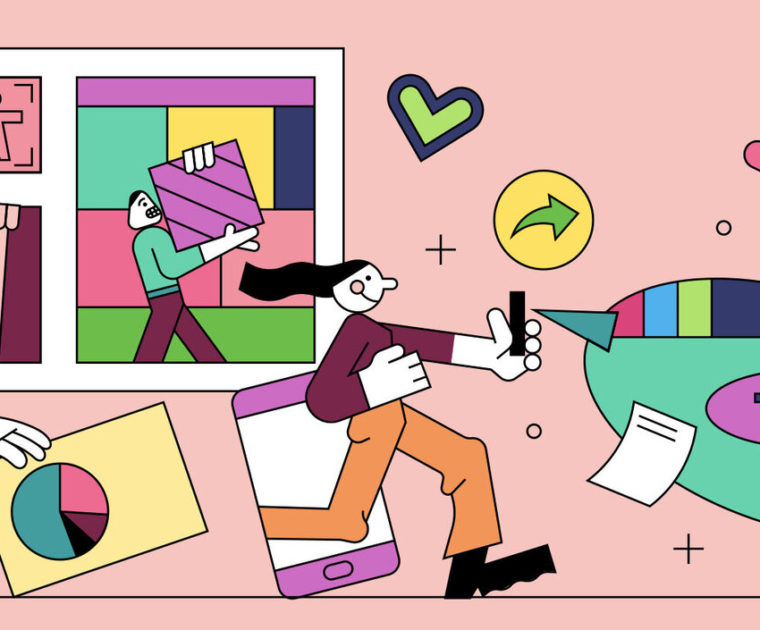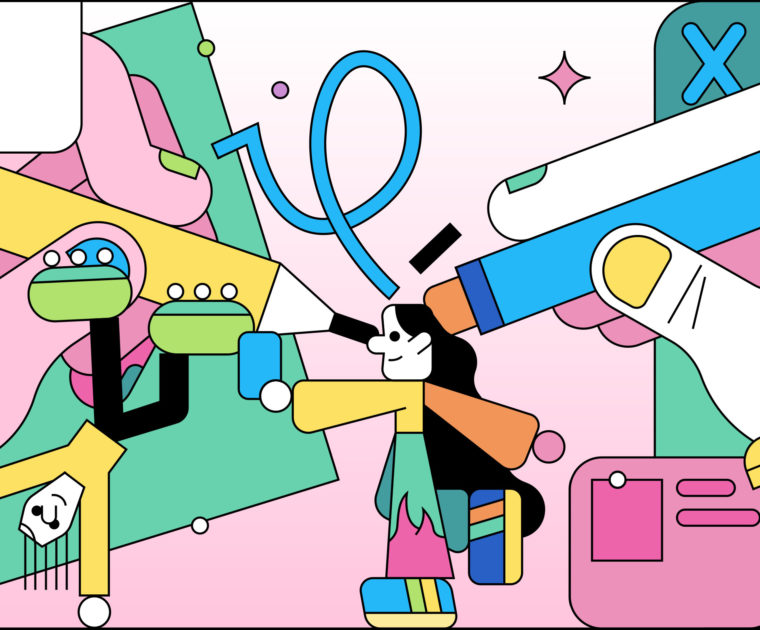What do people say about your brand? Not much? Then your audience is in dire need of a heavy dose of brand awareness. Your team can fix this little business challenge by partnering with influencers to roll out a high-impact brand awareness campaign.
First, let me Advocate for Brand Awareness Campaigns
Branding should be at the forefront of your mind — not just at startup — but as part of your typical day-to-day. More established businesses (most likely to be small businesses) can make the mistake of thinking they have somehow graduated from branding, focusing instead on sales and bottom-of-the-funnel magic. But without first increasing your prospect’s awareness about your brand and solidifying their trust in your brand, it’s hard to get (and keep getting) sales. This is where a brand awareness campaign can have the most impact.
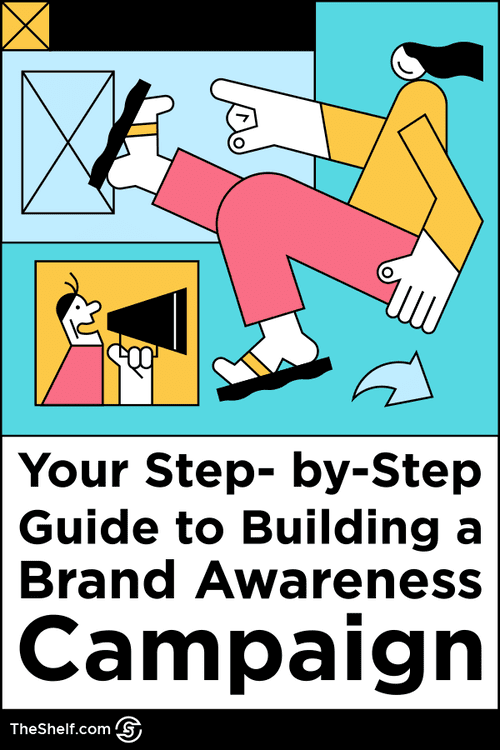
A pinterest pin post on Your step-by-step guide to building a brand awareness campaign. Big brands know this already. That’s how they get to be big in the first place. Just think about it: When’s the last time you saw Apple on social media, TV, or in the comments section of a post? Seen anything from Google lately? What about McDonald’s? I’ll bet you saw at least one of these brand today in an article, or on social media, or on a billboard promoting a message but not a product…
Brands like Apple, Google, McDonald’s and Nike are always the topic of conversation because these companies put real resources into building awareness of their brands. Just the brand itself. And because of that, they are practically everywhere — in movies, music videos, YouTube ads, the list goes on.
The TV show Arrested Development – by now a legit cult classic -made several mentions of Burger King in different scenes, including one where Henry Winkler (playing attorney Barry Zuckerkorn) jumped over an actual shark on his way to Burger King. (Good for you if you get that obscure reference.)
These are the brands that have gone beyond being brands to creating a culture. Their brand awareness campaigns did so much more than promote their company and spread awareness.
Remember this?
Didn’t Justin Long make you want to not be the PC guy? He was that line in the sand that sort of told all the cool kids what to buy. And you know what? The impact of that campaign still holds today.
Something like 60 percent of Gen Zers (who were teens and tots when that brand awareness campaign came out), own iPhones over Android. And iPhone and Apple are among the top three most popular brands with younger buyers. It’s no coincidence that these big brands have been around for a long time.
The point I’m working to drive home is that having a long-term brand awareness campaign strategy is one of the things that makes the big brands big brands.
That said, it’s totally okay if you’ve never launched a brand awareness campaign. I’m going to walk you step-by-step through the process of creating an influencer marketing campaign specifically designed to get eyes on your brand or product.
There’s no time to waste — people still aren’t talking about your brand… So let’s get started!

Why Brand Awareness Campaigns Need to Be Part of Your Overall Marketing Strategy
You Already Have a Brand
Maybe you’re on the fence about whether you need to invest time and money into a brand awareness campaign. Brand awareness is important, yes. But an entire brand awareness campaign devoted to it? You can’t even count it!
[side eye]Wanna know the truth? You already have a brand, whether you’re working at it or not. Fun fact: Half of people follow between one and four brands on social media, and it takes just 10 seconds for consumers to form an impression about a brand.
For good or for bad, that first impression is going to stick around until and unless you give your customers a more compelling narrative to latch onto. So, I want to lay out a few of the benefits that deliberate branding (supported by the best brand awareness campaigns) provides.
I found a really great HubSpot guide on brand awareness. When you have a moment, go on over to HubSpot and grab that guide to lay a good foundation before you embark on your influencer campaign.
Brand Awareness Helps Customers Remember You the Way You Want to be Remembered
The best brand awareness campaign ideas provide you with a few important benefits. Of course, it helps your audience tie your name to your product. It also helps your audience tie your name and product to a personality, culture, and/or cause.
It takes five to seven impressions for consumers to remember a brand. That’s true even after they’ve formed their initial impression. Makes sense, right? You can meet someone and forget you met, but find him familiar and maybe a little off-putting in a subsequent encounter, despite not remembering that initial meeting.
Well, for consumers, the opportunity to see your brand over and over again is one of the best ways to secure sales. Fifty-nine percent of consumers are more likely to buy from familiar brands.
Brand Awareness Is How You Tell Your Story
The brand awareness campaign is where you tell your story, humanize your company, and even show off your team of experts. And while “brand awareness” IS a type of influencer campaign that you can start and stop, your brand awareness efforts should be ongoing.
Brand Awareness Is What Paves the Way for Trust (and sales)
Brand awareness ALWAYS precedes a conversion. Utilizing brand awareness campaigns consistently boosts revenue by up to 23 percent. Your brand awareness efforts – whether organized as a campaign or just part of your everyday content marketing strategy – are specifically designed to help you customers trust your brand. That trust paves the way for that first sale and sets the stage for ongoing loyalty… and customer loyalty is worth 10x more than a single purchase.
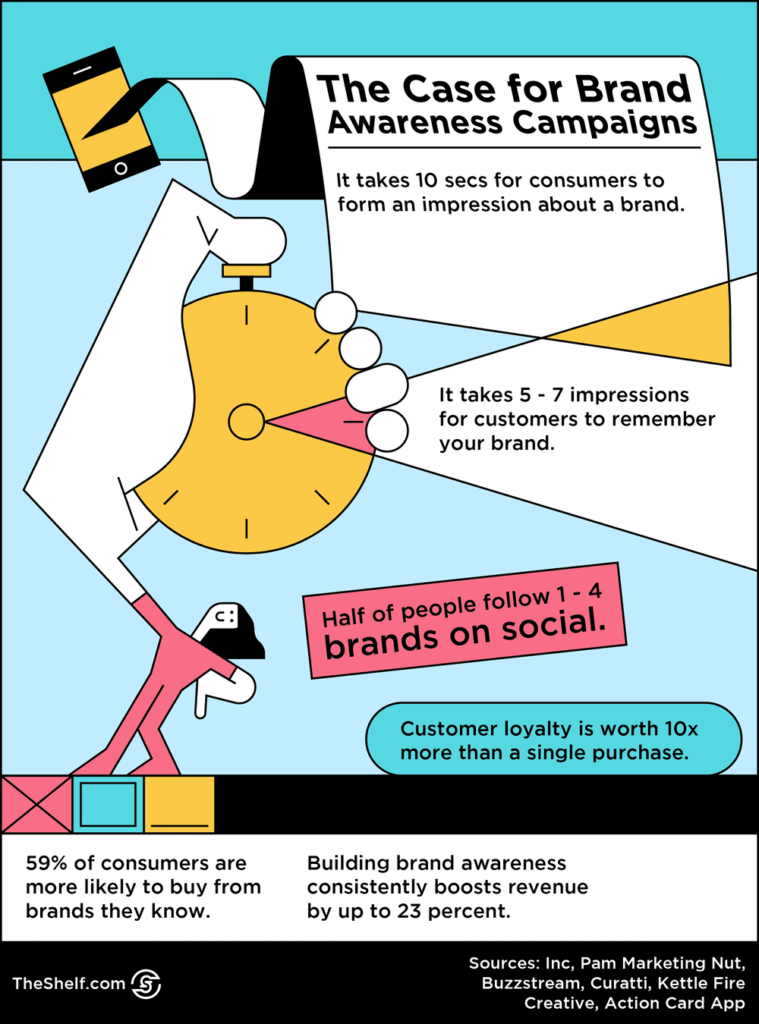
COPY AND PASTE THIS 👇 CODE TO EMBED THIS ☝️GRAPHIC.
I don’t know about you, but if I owned a business, I’d want to increase my revenue, customer loyalty, and social media followers. And that, my friend, is where a brand awareness influencer marketing campaign will really do the heavy lifting for you.
Now, just so you have a little more perspective, I’ve included below a graphic that shows the typical campaign launching schedule. We’re going to deviate from this, but three to four months actually is the ideal stretch of time you want to launch and optimize a campaign.
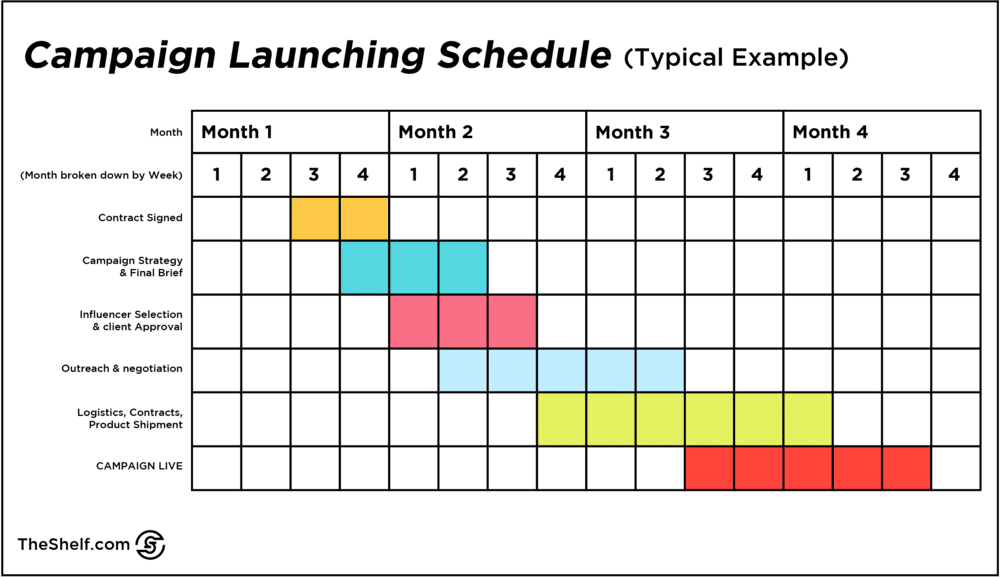
That said, let’s talk about the steps you would take to shorten the launch schedule and get a brand awareness campaign producing results for you in six to nine weeks instead of 16.
And FYI, we’ve launched full-on campaigns in as little as two weeks. A little something to keep in mind as we get knee-deep into the holiday marketing season.
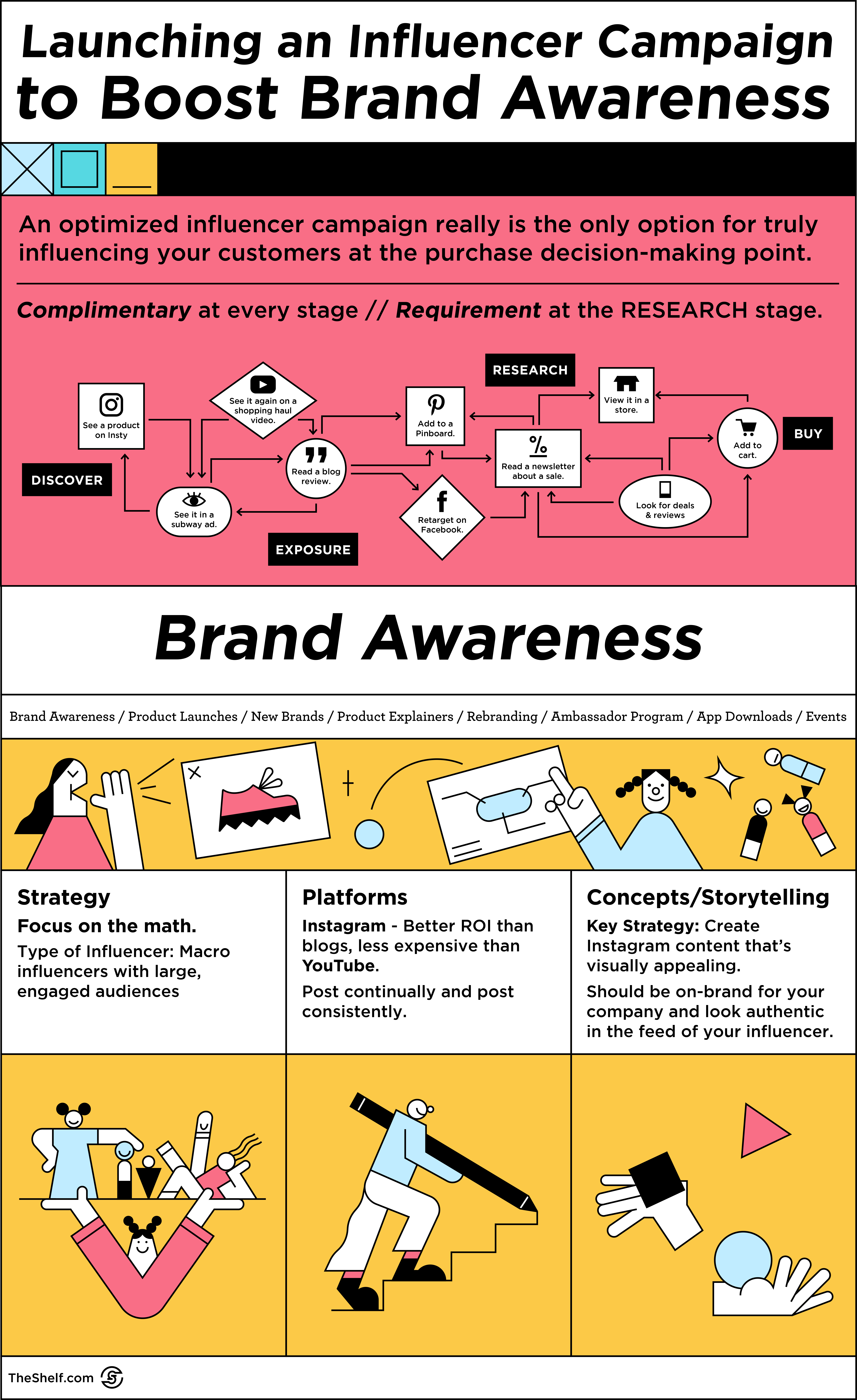
COPY AND PASTE THIS 👇 CODE TO EMBED THIS ☝️GRAPHIC.
Tips to Plan, Launch, & Optimize a Brand Awareness Influencer Campaign in the Next 60 Days
Just In Case You Haven’t Already Done the Preliminary Stuff…
There’s a lot to be done before launch day, so we’re not going to waste any time. Let’s review what you need to be doing the first four weeks of your brand awareness campaign. The good news is if your company has already laid this foundation when you created sales funnels or flywheels, you’ll probably move through this in a few days instead of a few weeks. Woot! Woot!
Create Your Brand Identity and Online Personality
We’re just going to assume you haven’t done this yet. In the off chance you haven’t, it’s 100% necessary.
Developing the identity of your brand is essential, whether you’re a startup or an established business. And that’s more than just your brand colors, logo, and tagline (you may remember we talked about that in our post on social media branding tools for small businesses.
Think of branding as establishing a personality and reputation for your company. That means in addition to the visual identifiers like colors and font, you also need to consider:
Purpose: What does your brand stand for?
Promise: What are you offering to customers?
Personality: How will you portray your marketing message in your brand awareness campaign?
Think of what it is you strive to do every day your business is open. For instance, if you’re in the healthcare industry, your purpose may be to help people lead healthier lifestyles.
Then your promise may be to deliver valuable content that helps your customers take action in improving their lifestyles. And to set your brand apart, your personality may be all about living off-the-beaten-path.
Maybe you don’t want to sound like another corporate medical center, right? Instead, you may think of your brand as youthful and spunky, modern and maybe a little feisty. Will you dare to slip in a few bleeps here and there?
These kinds of nuances will not only help you to distinguish your voice in a sea of chatter, but they also help you find your tribe online (a group that ideally is made up of the people your business or brand is actually targeting) . A little slang isn’t going to deter your target audience. A little slang will help you find them.
Fun fact: The first time I (Sorilbran) met my kids’ pediatrician, she was wearing an undercut with a 24-inch single braid in the top of her head. First thought: I like her. #Tribe.
Today’s consumers are very forgiving of brands using slang and naughty words (as long as it’s done tastefully).
Quick tip: After you brainstorm ideas, write down your final decision and the reasons behind those decisions so you have a brand identity guide for everyone who works on your brand building campaign.
Find Your Audience and Choose Your Social Channels
The biggest mistake you can make as a brand is to choose to do a Walmart-style campaign. You know, where you go far and wide with your targeting.
Walmart can pull this off because the company sells just about everything to just about anybody. So this HUGE retailer can target a HUGE group of people and it makes sense.
(FYI: Even Walmart personalizes their targeting for people who have downloaded the app, or those who have previously ordered online or had groceries delivered…. Just a little note about the power of personalization.)
While your product or service may suit the needs of a lot of people, you really do want to niche it down. This way, you can get into the nitty-gritty of your target customer’s specific pain points, making your marketing more effective and more likely to convert.
It’s also easier to find out where your customers like to hang out online. It would be a waste of time to market on TikTok if your audience is on Instagram.
So, in addition to coming up with your brand identity, online personality, and voice, you also need to create buyer personas if you haven’t already, and write down everything about your audience.
Things like:
- Geographic location
- Whether they live in the city, burbs, or country
- Age
- Profession
- Family size
- Lifestyle
- Shopping habits
- Brand affinity
- Social media channels they use (there will likely be more than one).
Shop Around for Influencer Partnerships
This is also the time to start shopping around for influencer partners. But we haven’t officially started the campaign yet. I know, but it can take a few weeks just to choose, vet, and get contracts signed for influencers. Since you now know which social media channels to target, you can connect with influencers who are on platforms whose audiences overlap yours.
You can find influencers on your own. But I’ll be the first to admit the process of finding a legit influencer to work with can be a little nerve-wracking. So, it’s probably advisable that if you’re not working with a full-service influencer marketing agency (like The Shelf team), you at least need an influencer marketing platform (like The Shelf SaaS) that can help you find and qualify influencers for your campaign.
You want to know as much about potential influencer partners as you know about your target customer. All the same info applies. But you also want to have some really good insights on the quality of their content as well.
It’s important that you choose influencers whose styles are similar to your brand’s style. If you go with an influencer who’s too different, you risk targeting the wrong segment of the influencer’s audience. They’ll find your content or product irrelevant or not their cup of tea.
Set a Budget for Your Influencer Campaign
The wonder of wonders for most brands that have never launched influencer campaigns is trying to figure out how much it’s going to cost. Well, there are several elements that will factor into the cost of running a campaign
- Whether it’s fully managed by an influencer agency or you’re using a platform like The Shelf for a monthly fee
- The type of influencer your strategy calls for. Should you use nano- and micro-influencers, or will your campaign perform better with macro-influencers (which is typically the case for a brand awareness campaign)?
- Macro-influencer can cost multiple-times more than a micro-influencer because their audiences are multiple-times larger, most times. (And, let’s not forget that the average Instagram user has fewer than 200 followers)
- The type of content you want created for your campaign (Instagram post vs blog post vs Pinterest pin vs Instagram Stories, vs a YouTube video
The goal of a brand awareness campaign is to spread the word about your brand or product (or some aspect of your product) to as many people as possible. The fastest way to do that (and the most effective way) is to leverage the massive reach of macro influencers who have between 100k and maybe 500k followers, and have them create Instagram posts.

Just as a general note, to ballpark things a little, larger influencers often charge based on the size of their followings. So, someone with 400k followers, may charge 20 cents per 1,000 followers… or $8k for the content they’re going to create for your campaign.
In the emptiest, widest of ballparks for drumming up ballpark figures for influencers in the Western Hemisphere:
Nano-influencers who have audiences under 10k typically charge in the low 100s, depending on the type of content you need and the size of their audience. This is the rate charged by most people who qualify as influencers, BUT it’s not the size influencer your really want for a Brand Awareness campaign.
For Micro-influencers with between 10k and 25k followers, expect to pay in the high hundreds, upwards of $1000 for a single post, again depending on the content you need and the size of their audience.
Micro-influencers who have between 25k and 50k followers may charge up to $1500 per post.
Micro-influencers with 50k to 100k may charge upwards of $2k per post.
Macro-influencers with 100k to 500k followers may charge between $2k and $10k per post.
Macro-influencers with 500k to 1m followers, rates can reach anywhere from $10k to $25k per post pretty easily
Two things to keep in mind here: The larger the influencer, the more likely it is they’ll charge per 1000 followers, usually somewhere between 15 and 50 cents per 1000 followers. And the different types of platforms (and corresponding content) also trigger different rates.

I did go high with those rates. I figure it’s better than the reverse where I go low and every influencer tells you you’re way off. When it comes to negotiating rates for posts, get a lot of different rates for the type of content you want, and let rate negotiations be the second phase of the process. You’ll find that with influencers, rates can vary depending on the project, and certain influencers will negotiate their rates while others won’t.
Just an FYI, at any point in this launch plan, you can speed things up a bit. But I don’t recommend skipping steps. If you have more resources at your disposal, you can definitely expedite the planning and execution, though. Now that you’ve got all the research complete, it’s time to start connecting and creating.
Phase 1: Influencer Selection… Finding Influencer Partners
We listed this as the first thing you do because it can take a few weeks before you choose all your influencers, and another few weeks before you can agree on content services, fees, and UGC rights.
Identify Influencers
I’ll be the first to admit that this is harder than it sounds. There are thousands of influencers out there, and time and again, brands will tell you finding the right influencers to partner with is consistently one of their biggest campaign challenges.
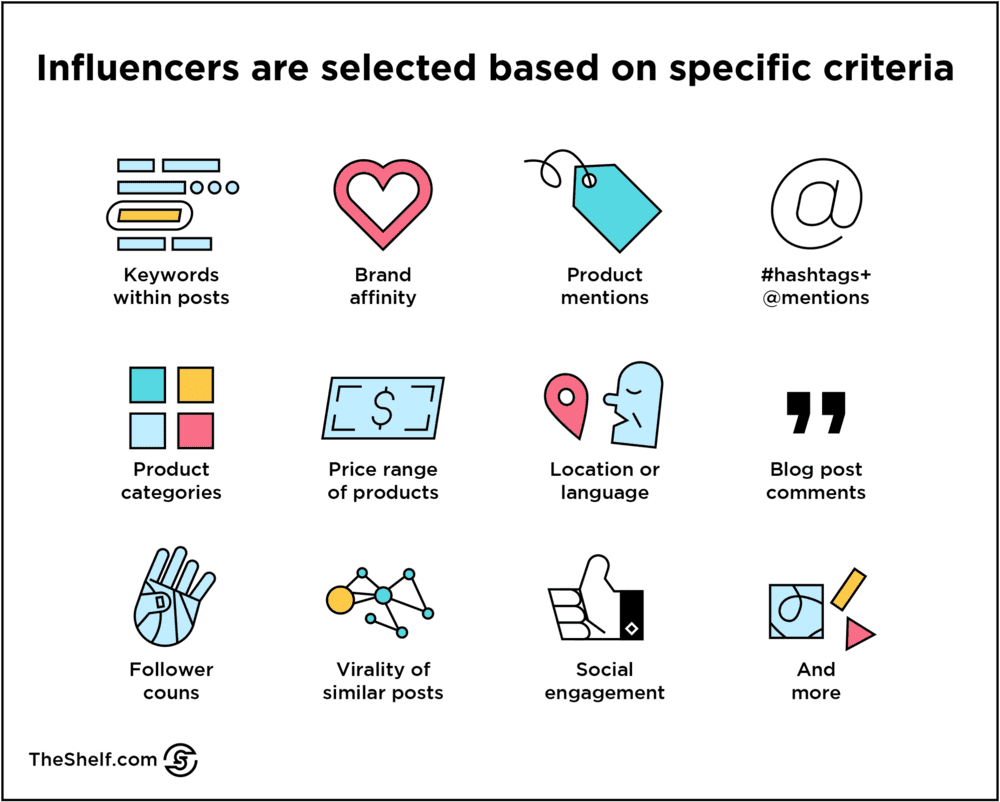
Identifying specific influencers who may be a good fit for your campaign starts with you creating a list of the criteria selected influencers will need to meet to fulfill specific campaign goals.
For instance, if you want to get video made, that means you need vloggers with popular YouTube channels who film some pretty amazing videos.
So, what does that magical list of criteria look like in real life? Here’s one we put together for a relatively recent campaign:
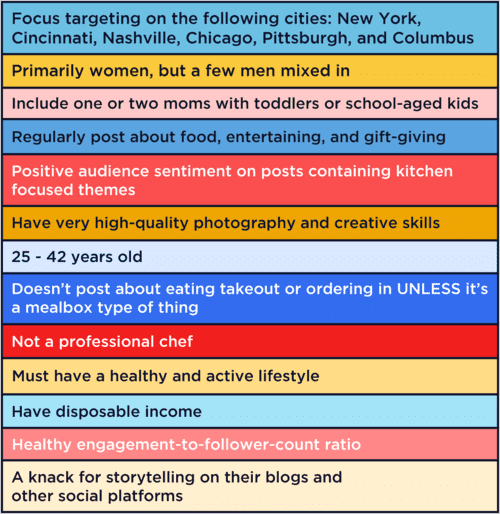
Influencer Selection
Once you have your list, it’s time to start looking at influencers, and you can start this process with simple searches on social media platforms. There are tons of hashtags that’ll help you zero in on certain types of content and certain types of influencers.
If you’re using our platform, this process goes a lot faster. In addition to being able to narrow your pool with lots of super-specific filters…
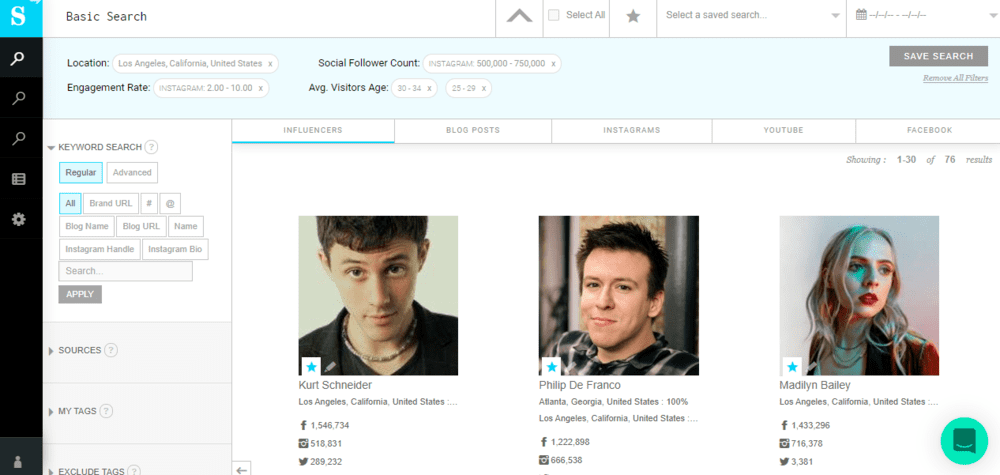
…. The Shelf platform also lets you to take a look at the key metrics for each potential influencer partner. By key metrics, I mean things like:
- Engagement ratios across multiple platforms
- Follower growth across different platforms over multiple years
- Monthly blog traffic numbers
- Blog traffic sources
- Audience demographic data like age and location
- Brands frequently mentioned
- Most-used hashtags
- Categories/verticals discussed most frequently
- Most recent posts across multiple platforms

Select Your Influencers and Sign Contracts
Choose your influencers and get those contracts signed BEFORE you send any products. What are they signing? Well, they are agreeing to create a pre-determined type and amount of content for a specific fee that will be paid out based on your agreement.
Your contract needs to be pretty detailed and non-jargony so it’s crystal clear what the expectations are for both parties. You want each of your influencer partners to clearly understand what she is expected to produce, the messaging to include, the length of the post, and the type of image or video to create. You want to make sure there’s a deadline for content creation and a timeline for payment.
In some cases, it’s also a good idea to get more into the artistic concept behind a campaign or post, especially if you’re commissioning an artist to create something. Because what you don’t want is 40 posts that are basic product placements. Or posts that are so artistic and abstract that your audience doesn’t grok what’s going on.
To keep that from happening to you, it’s really gonna help you to do your preliminary research on the type of content the influencer creates, and any previous campaigns they’ve worked on. (Actually, read this post on influencer media kits so you know what to ask for). But you also need to make it crystal clear in your talks with the influencer and in your contract what your content expectations are.
Then and only then should you supply the influencers you choose with a free trial or sample of your product so they can talk from experience when they post about your product or service and actually feature your product in the post.
Be prepared to pay per-post they publish to their feed. Two posts will typically cost more than one. Not double, but more. If your campaign will run for several weeks or months, then factor in how many posts, brand mentions, and other forms of promotional content you’ll need in order to maintain a consistent stream of influencer-generated content.
Phase 2: Create and Approve Content
Approve Influencer Content
What kind of content should your influencers create? That actually depends on the corresponding UGC goals you set for your campaign and what you’re promoting. And yeah, most brand awareness campaigns are served with an ample helping of influencer-generated content.
For the brand awareness campaigns, we’ve managed, we’ve focused on partnering with influencers we know can create content that’s on-brand for the client and still in line with the influencer’s own brand.
For instance, we brought on Dawn Lucy of @fashionshouldbefun for a spring brand awareness campaign a couple years ago. Looking at her feed, can you even tell which is the sponsored post?
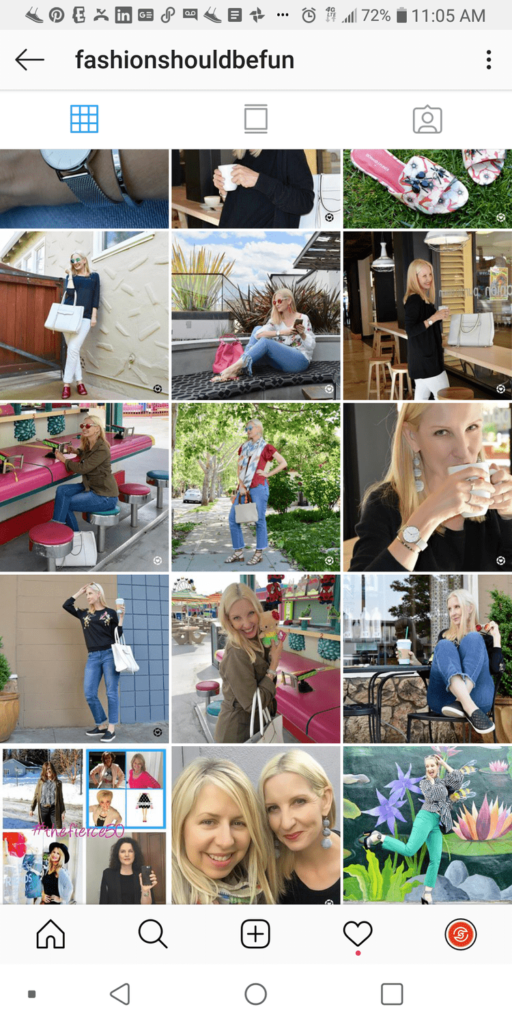
It’s the one on the bottom right, actually. Can’t really tell because Dawn’s all about that chic style and all her pics are pretty stylish, so… perfect match. Her followers are all like, “Another great outfit from Dawn!” or “Ooo, another cute and quirky pic from Dawn… Cute shoes though. Where’d you get em’?”
Uh, Donald J Pliner. That’s where.
My point is the type of content they create depends on a couple of different factors, including the influencer creating the content and the buyer persona you’re targeting with the content.
You may find that highlighting the product makes sense for one influencer while a live action shot or haul video makes sense for others. Maybe it’s better to just create beautiful photos.
The goal for the brand is usually to have a nice catalog of unique, eye-catching content that provokes a certain type of emotion AND appeals to specific buyer personas.
Let’s run down a quick list of some ideas of the type of content that work really well with brand awareness campaigns:
- Product giveaways
- Blog posts where the influencer integrates the product into a post about a broader topic
- Co-creating content (social, blog, video)
- Contests
- Sponsored posts (blog or social)
- Influencer takeovers (influencer controls the brand’s account for the day or hour)
Once you know which types of content you want to focus on, you can determine how you’ll implement them throughout the month. For instance, maybe start with one type of post and add the others as you go:
- Sponsored post with a cute or creative set-up
- Product demo video
- Affiliate discount code
- Contest announcement
- Contest followup and winner announcement
- Stories with influencer Q/A style
There are many ways you can approach your influencer campaigns, so get creative!
Brand Awareness Campaign Examples of Influencer Content
ARCUS HUNTING – #ARCUSCHALLENGE CAMPAIGN
For this campaign, Arcus Hunting wanted to increase brand awareness around its Arcus Challenge by recruiting hunting enthusiasts to discuss what they loved about Big Game Butter and Ramcat Broadheads high-end arrows.
So, we enlisted about a dozen popular hunters to naturally integrate Arcus products into live-action shots and educational Instagram posts that packed with tips and tricks. Remember what I said earlier about influencers being more inclined to decline partnership opportunities than accept? Yeah, well we ran into that with this campaign. Ninety percent of the influencer we approached declined the campaign because in the hunting/outdoors space, ambassadorships reign. That meant most of the influencers we approached were already tied up in these year-long contracts with other brands.
But we did secure a really great collective of hunters who created some really striking content for this campaign, which is great because we really wanted posts that were visually-striking and a little dramatic, content that would effectively capture the thrill of hunting. Like this one from Brandon Neitzel…
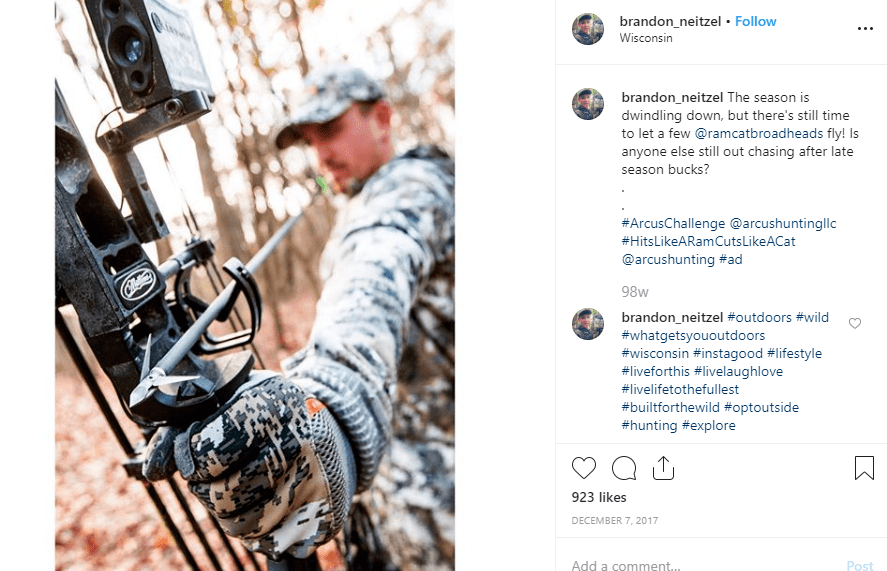
Seriously… you don’t have to be a hunting enthusiast to stop-scroll on that pic. It’s almost art.
…
The #ArcusChallenge campaign produced 58 pieces of content and reached more than 3.6 million outdoor enthusiasts and hunters across Instagram, Facebook, and Twitter.
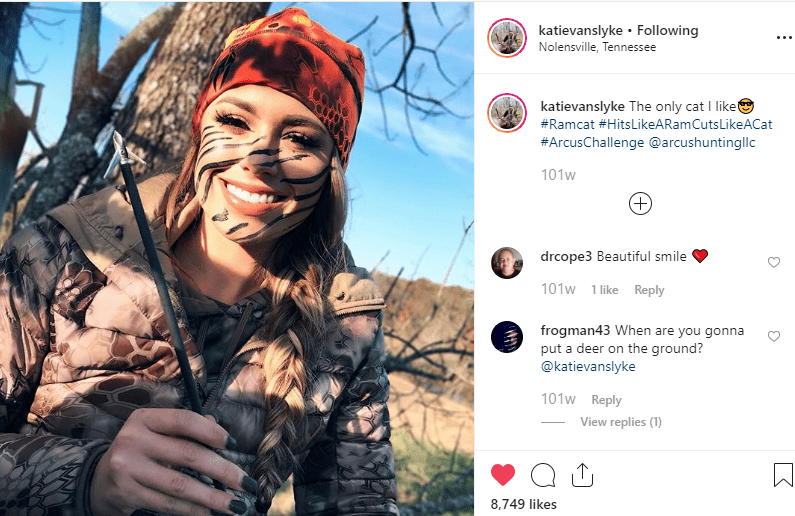
DONALD J PLINER – #ARTOFFUN CAMPAIGN
Donald J Pliner’s stylish shoes appeal to a certain type of trendsetter. For the #ArtofFun campaign, DJP wanted the campaign to be a sort of siren call to drive its tribe of fashion-conscious, young professionals into stores and onto the brand’s website to take a look at the latest spring arrivals.
The campaign called for more than a dozen confident, trendy millennials with a sense of independent style to capture colorful, chic, creative, fun images of themselves wearing Donald J Pliner shoes. The campaign generated 45 pieces of content for Donald J Pliner to reuse across its own branded channels (another UGC tie-in), and reached more than 2 million Instagrammers.
The grid below features posts from @amysoto_ @itsnkenge @msrachelthomas @unbearablystylish @afashionnerd @thecultureofdesign.
GRAETER’S – #AGRAETERSGIFT CAMPAIGN
Raise your hand if you think gourmet ice cream deserves a brand awareness campaign. #AGraetersGift focused on boosting brand awareness of Graeter’s ice cream around the holidays. Here’s why…
Graeter’s is handmade gourmet ice cream that uses the French pot process to make the ice cream so thick it can’t even be mechanically packed! (Yes, please!) The company ships ice cream directly (!!) to consumers, and has store locations in the Midwest, as well as distribution deals with some of the major grocery store chains.
For this campaign, we leveraged two branded hashtags (#GiftCardsAreLame and #AGraetersGift) with the goal of positioning a Graeter’s multi-pack of ice cream as a great holiday gift idea for those who want to give a gift that’s a little outside the box.
We recruited influencers who lived in cities that had Graeter’s ice cream stores, and specifically targeted influencers in their 30s and 40s who were either parents, foodies, or food experimenters. One major criteria was the influencers had to be great with dreaming up beautiful images. And the campaign produced some beautiful content, as well as holiday recipes that incorporated the ice cream (check out some of that magic in the gallery below).
…
The grid below features content from @noelledowning @oliviarink @asequinloveaffair @pauliecooks @asimplepantry @fancytreehouse @joannamhui
And a Few Examples of Influencer Concepts That Would Totally Work for a Brand Awareness Campaigns
So, I want to add this section to maybe help dream up ideas for industries that don’t typically use influencers much, but that could. For this particular examples, I want to focus on moving/relocation services. Super-sexy, right?
#MOVINGDAY
It makes sense to start with hashtags. Hashtags are absolutely crucial because they make your content searchable to a wider audience beyond just your followers and the influencer’s followers.
Using tags like #movingday #moving #relocating are important. But I want you to think about all the different branches that lead to moving day, as well. Things like #collegebound #gettingmarried #justmarried #babyonboard #newlydivorced #itsover
We can brainstorm a hundred of these then check Instagram for proof that they’re viable hashtags that really are being used by your target audience.
Beyond popular hashtags, you can also leverage branded hashtags. I think the most popular example of this is the hashtag #uhaulfamous (included in 17.9k posts). This hashtag has become trendy to use whether or not the content tagged is a sponsored post.
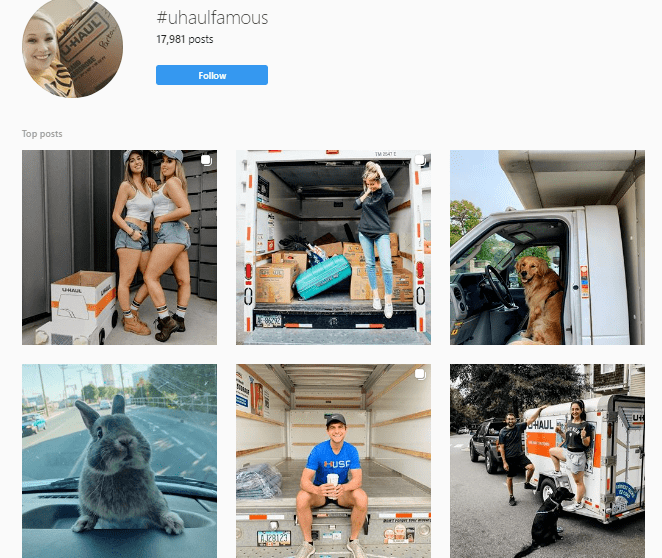
Now, for companies that provide moving services, your go-to is definitely not going to be using that hashtag unless that’s your company. And while you may not necessarily want to aim all your guns at making a similar branded hashtag using your name in hopes of becoming the next big trend, you CAN create a branded hashtag (like we did with the Graeter’s campaign where the second branded hashtag was #GiftCardsAreLame) that people will see and that will resonate with them.
The key for you is going to be some serious targeting.
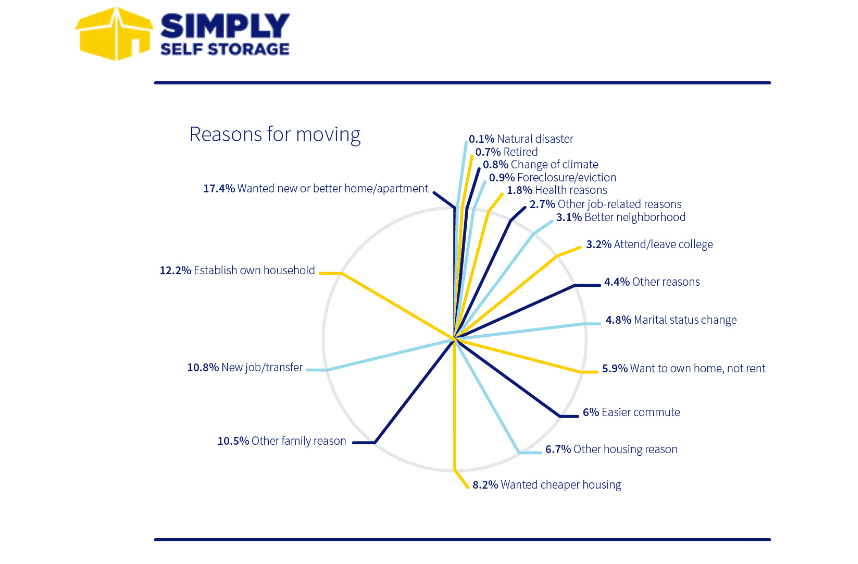
Finding Audience Segments to Target
It won’t be hard. The good news is people LOVE capturing what they are doing. But they also LOVE talking about what they’re going to do. There are something like 57k posts on Instagram tagged #movingsoon, 105k tagged #relocating, 144k tagged #downsizing, 19k tagged #crosscountrymove, #717k tagged collegebound, 18k tagged #igotthejob, 58k tagged #igotthekeys, more than 1 million tagged #babyontheway more han 2 million tagged #househunting, and 44k tagged #movingtime.
That’s plenty of heads up, don’t you think?
The data we pulled from Simply Self Storage supports the images we found on Instagram that most movers who rent trucks or buy moving services are young couples and young families making intrastate and interstate moves. These are also the audience members most likely to document different aspects of that move on social media.
So, your goal as a brand that provides moving services would be to create compelling campaigns. A good way to do that is by partnering with influencers who are in different stages of their lives.
Targeting Small Segments of Your Audience
For instance, 4.8 percent of your target audience are moving because of marital/relationship status changes – whether marriage, moving in together, or divorce.
Check out this post from Kristin (@a_southern_confession), a Charlotte-based style influencer who has shared a series of posts on her personal wins and challenges after a divorce. She has built a responsive community with whom she can share this part of her life, as she learns lessons many women are having to learn about what it means to move on after a breakup. And let’s face it, most of us can relate to that in some way, shape, or form.
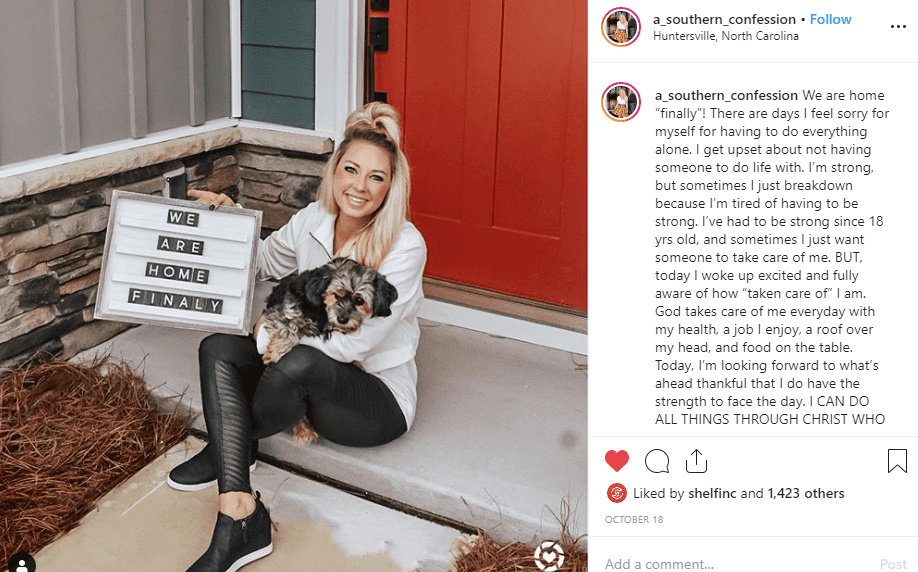
Source: @asouthernconfession on Instagram
In addition to generating more than 1400 Likes, this post also grabbed more than 300 comments, mostly from Kristin’s super-supportive community.
Another example of this type of segmenting could be done with a macro influencer who is using Insta to document a pregnancy, for instance.
This striking set of pics from mom-to-be/new mom Brittany Lupton (find her on Instagram @brittanylupton – as of this writing, she’s 38 weeks into her pregnancy) show the influencer snapping her final selfie in the her old house followed by her first posted selfie in her new house, just ahead of her baby’s arrival.
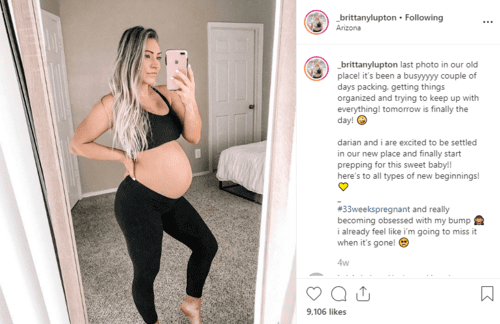
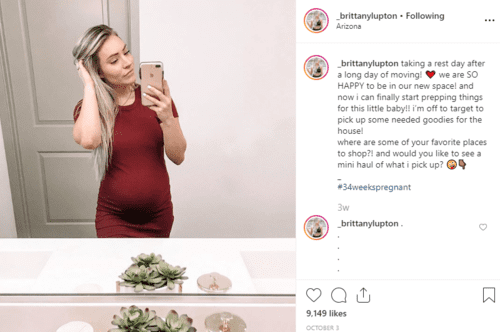
The picture missing from between those two, of course, is the shots of the boxes… maybe of Brittany neatly and lovingly packing new baby items into the baby boxes OR unpacking them from the baby room boxes and tucking them, Kondo-style, into drawers by folding them into tidy, little cubes.
Both of these women have demonstrated compelling reasons for their moves, reasons that could easily tap into their audience’s compassion, empathy, nostalgia, and aspiration channels.
One woman is successfully starting over after an important relationship ends. The other woman is preparing to welcome a new baby into a home she and her partner have deemed better-suited for raising kids. Those are GREAT reasons to load all your stuff into a truck (or trucks) and make a move. Millions of people move in the U.S. every single year for the same reasons.
Targeting Larger Swathes of Your Audience
What about moving because of work (which 10.9 percent of moves do) or because you just want a change of scenery?
Sure. Check out the next post from Lorrayne Mavromatis, a newly-married influencer whose hubby is in medical school. Always optimistic, always an open book, Lorrayne shares what it’s like to be the wife of a medical student, and captures many of their adventures in pictures. Seriously, her pics are amazing.
In this post, as best I can tell (thank you high school Spanish and Ed Motta songs), Lorrayne is laughing at herself because she flipped out after seeing a bug and banged her head on the truck as she dashed out the back and went running down the street… all of which hubby captured on video.
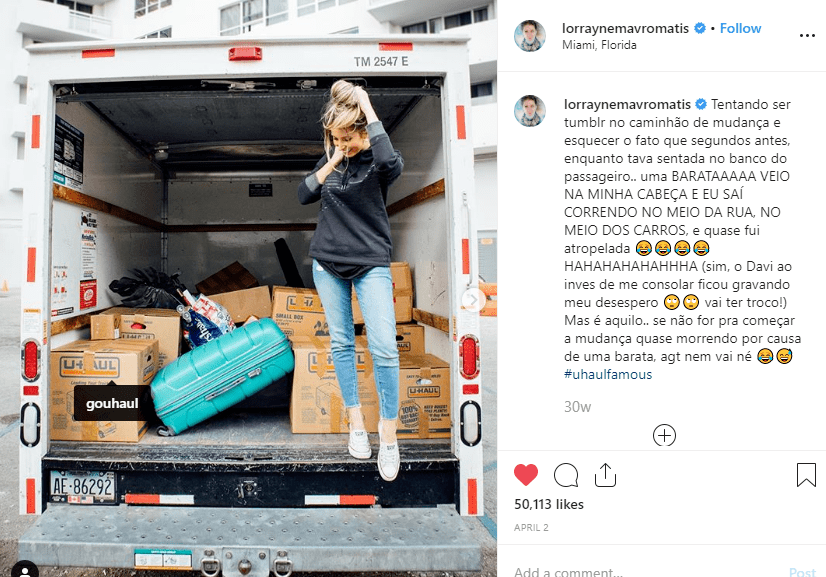
One of the cool things about this particular influencer (other than her massive audience of 986k Instagram followers) is that she smartly creates Instagram-worthy content with CTAs that drive readers back to her YouTube channel to learn the details.
And yes, I totally see that her channel’s in another language. Funny thing is Google translate sort of blinded me to it for a few minutes before I landed on her channel and realized I couldn’t really follow along. BUT you get the gist of this strategy, yes?
Coincidentally, I found her when I was scanning content using the hashtag #uhaulfamous.
Working in Your Features
Just gonna go ahead and say it… you don’t always have to work in a bunch of features. I know it probably feels like you do, but you don’t.
If we think about someone having to physically move after a breakup, her goal is going to be to get something or someone that can move everything right the first time. She doesn’t really want to get bogged down with specs and weight and technical jargon. She just wants to friggin’ move!
That’s not to say the features can never be mentioned. But there’s a place for them. Check out this post from well-loved fitness and nutrition guru Vinnie Tortorich about his cross-country move. Of 118 comments (to date) we spotted two that were specifically about the Uhaul trailer. Just click to maximize the screenshots of the comments so you can see them better.
What I really like about this example is the tone of the post and of the comments left under Vinnie’s post. And something brands really have to get better at. Not all Instagram posts are about beautiful oceans and sun-kissed beach bodies. And not all Instagram users are interested in that.
Lots of Vinnie’s followers are men and women of a certain age – older Gen Xers, and Baby Boomers. The online conversations for those generations aren’t about inducing FOMO. They’re about telling it like it is, being bold, clear, transparent, useful, and not taking any guff.
And this vibe shows up in Vinnie’s posts. You can tell by the comments left that Vinnie is well-liked. He took some good-natured ribbing for driving a Ford truck, and there were some other clever quips and jabs dropped in the comments. Most of what I saw, however, was consistent support for his decision to move from California to Virginia.
Vinnie also posted a screenshot of the fuel pump when he stopped to get gas on the way to his new home. Look at his caption. Super Boomered-out. Definitely something your Uncle Jack would say.
Phase 3: Roll Out Your Influencer Marketing Campaign
Alright, here comes the fun part — planning your influencer marketing strategy. Now, although this is your branding campaign, don’t be afraid to ask your chosen influencers for ideas.
While I’m sure you know your audience, influencers “get” how your audience consumes content. It’s like knowing your kids… but your daughter’s BFF knows the real deal about Brody and homecoming, and which cartoonish electronic music acts she’s into now… the one with the mouse head, the marshmallow head or the ones with the bike helmets…
Influencers may also have a few tricks up their sleeves that can help you build awareness more efficiently. The goal is to incorporate several big influencers so they can quickly spread the word about your brand to a broader audience.
Remember the stat about impressions and how it takes around six for you to make just an inkling of an impact on a consumer? Well, the brand awareness campaign is designed to address that. This campaign will make sure users see your brand mentioned and promoted across Instagram, Twitter, and other platforms (by different users), and it’ll start to dawn on them that you’re worth checking out.
Get Influencer Content Scheduled!
It’s time to put all your hard work into action. Thankfully, you don’t have to do anything manually. The influencers will post the content themselves to their own feeds and for those running their campaigns on our platform, YOU can monitor the performance of each post from your campaign dashboard.
Optimize Like a Mutha
The good news is that all the difficult and tedious tasks are completed. Your focus for the duration of your brand awareness campaign needs to be on the optimization and expansion of your campaign.
It’s critical to keep an eye on how things are going. This includes your blog posts (how much traffic are they bringing?), social media posts (how much engagement are they receiving?), and conversions (how many people are buying?).
A few key things to remember about the optimization stage:
- It’s important to organize a method for tracking your results. Our dashboard does this, but you can also use attribution software.
- Amplify what works. You may want to boost posts that are generating engagement and start solidifying your messaging from post to post. This becomes important when certain captions, pictures, etc. start outperforming the others.
- It’s advisable to redirect resources from posts that aren’t performing as well so you can use a few bucks to boost posts that are performing well.
- If you are continuing your campaign for weeks or months, only continue with top-performing creators (and make sure you have the option in your contract to cut or extend influencers’ participation in your campaign).
Move Forward with Post-Launch Efforts
It’s also the perfect time for post-launch content and interactions, such as hosting live events. Maybe a webinar or Q&A session with your audience.
Do whatever you can to keep the momentum flowing (the proof is in the metrics — use this to direct the focus of your content).
A Corresponding Content Marketing Push Will Help Your Brand Awareness Campaign
Try Some Good, Old-Fashion Content Marketing
Just as you want to start influencer outreach immediately, if you have the resources, it’s also a good idea to connect with popular blogs and blog editors (for publications with multiple contributors) as soon as possible.
It’s true that part of your Brand Awareness strategy will include blog posts from influencers, but this is something a little different, as it’s not technically part of your influencer strategy. It’s part of a smart overall marketing strategy.
There’s no way around content marketing when you’re trying to build brand visibility. While social media is crucial to your branding strategy, people still use Google to search for products and services.
Since it can take six or so months to see SEO results, you can use guest posting to get faster outcomes. The backlinks to your website from high-authority websites (blogs that already receive lots of monthly visitors) will drive traffic from targeted audiences quicker.
But the chances of them converting depends on the sites you choose. This is why you should be very selective about the sites you guest post on.
Ideally, you should pick sites that share the same niche and/or audience as you.
Make a list of the potential sites and save their writer guidelines (if available). You’ll need to pitch certain editors, while others will allow you to pay for sponsored submissions.
Yes, you need to research the topics that’ll suit your campaign, audience, and the blog’s identity. In most cases, the blog editor will have a style guide you can use to come up with relevant ideas.
Consider pitching several ideas to each editor. As a rule of thumb, you shouldn’t pitch the same idea to multiple editors at the same time. It could turn into a nightmare for your campaign if you have to write the same exact piece of content three or four times.
Don’t forget to ask if it’s alright to include your website link (or better, a landing page) at the end of the blog post.
Then you should also be able to add your bio at the end that links to your site and social profiles.
Quick Note: If you want to spice things up, see about getting interviewed by a popular blogger in your niche. Or you can answer relevant inquiries that you find on HARO (Help a Reporter Out). Another tactic… inquire about the price to advertise on a 3rd-party site that has high Domain Authority.
Create Your Own 30-Day Content Calendar (and Start Creating)
YOUR BLOG
It’s a good idea to also have content scheduled by your own team to support the efforts made by your influencers. Again, not technically part of your influencer strategy, but blogging is part of a strong overall content marketing plan.
If you don’t already have a blog set up on your website — where have you been?! Alright, don’t panic — you can still get ahead by creating one using WordPress.org (not to be mistaken with WordPress.com).
You’ll need this ready to go so you can begin planning the content you’ll write for the blog.
So, take some time to focus on planning out the content your team will create for all of your online platforms, including your own blog and your branded social channels.
What topics should you cover on your blog that’ll attract your audience? Begin creating outlines.
A great place to start is at AnswerThePublic.com. Type in the general keyword or idea you’re focusing on, and you’ll see (hopefully) a ton of questions people ask.
You can take these questions and turn them into content for your blog (and guest blog posts).
So how many blog posts do you need to write in 30 days? If you focus on delivering high-quality, well-researched, long-form pieces, then you can get away with around eight pieces — two per week.
Not bad, right?
Side note: If you don’t want to manage a blog, you can always publish on 3rd-party platforms, such as Medium. These already have an audience, which increases the chances of your content being seen quicker. Of course, having your own platform is best because you’re in complete control (and ownership) of the content you publish.
YOUR SOCIAL CHANNELS
Now, let’s move on to what your social schedule will look like. Create a calendar detailing the type of content, the topic of the post, and where it’s being posted.
For example, your 30-day schedule may look like this:
- 14 Facebook posts
- 14 Instagram posts (a mix of text, video, and photos)
- 20 tweets
- 7 LinkedIn updates
- 5 pins on Pinterest
But what exactly are you posting? It’s a good idea to detail this as well:
- 1st post – Introducing a product
- 2nd post – Sharing a video demo of the product
- 3rd post – Social proof, happy customers using product
- 4th post – Stories (behind the scenes access)
- 5th post – Infographic
And you continue until you have all the content laid out for your own social media accounts.
Then your blogging plan may look like this:
- 2 blog posts per week
- 4 guest blog posts per month
- Share blog posts on (Instagram, Twitter, Facebook)
But you’ll need to take it a little further:
- First blog post – Topic 1
- Second blog post – Topic 2
- Third blog post – Topic 3
When planning your social media and blog posts, consider the following:
- Do they need to post in sequential order?
- Does your campaign need a hashtag (existing or made up)?
- Do you have images (or plans for them) to ensure they match your posts and content?
- What days and times are the best and on which social platforms?
The more organized your strategy, the easier it’ll be to execute it (and see results).
You Just Launched a Brand Awareness Campaign in Less Than 60 Days!
Once you learn the process, it’ll get easier and faster for you to roll out a brand awareness campaign. Or any other campaign for that matter. With this guide, you can prepare your launch in just 60 days.
So what are you waiting for?



